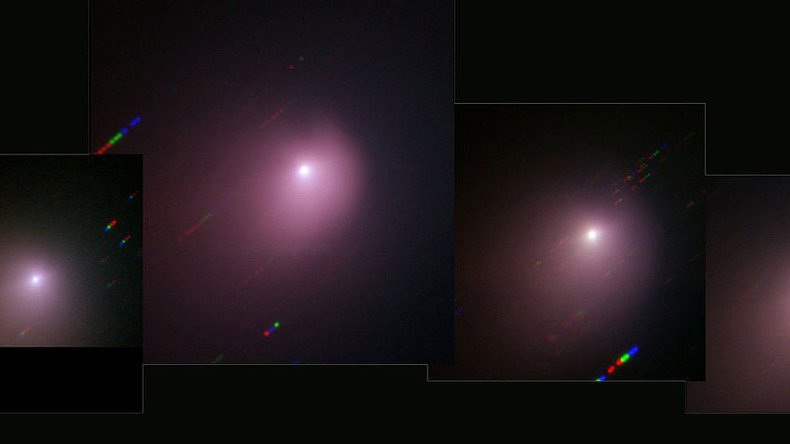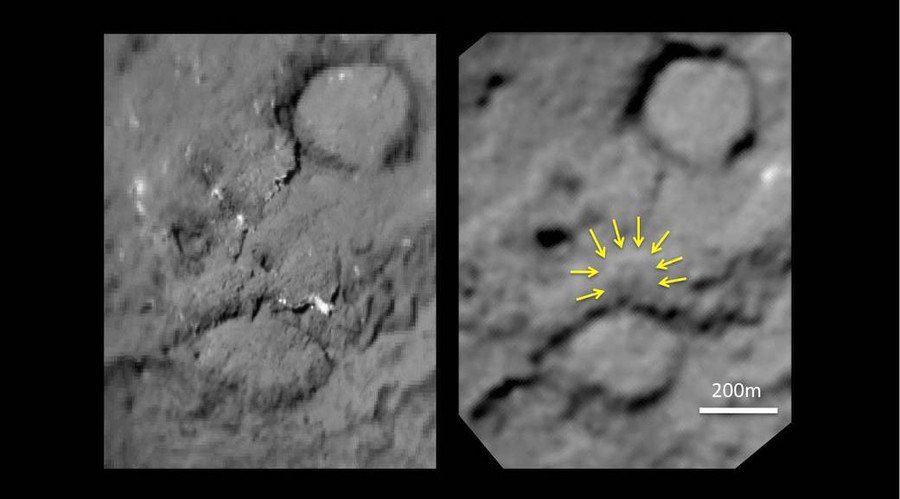Deep Impact’s groundbreaking collision with Comet Tempel 1 revisited (PHOTOS)

Astonishing images of the moment NASA’s Deep Impact spacecraft plunged into the Comet Tempel 1 have been re-released on social media by the European Southern Observatory.
The powerful collision happened on July 4 2005 and marked the first time a man made object made contact with the surface of a comet.
NASA said the ‘hyper-speed collision’ was not only of major significance to comet science, but to the study of the birth of our solar system.
The ESO posted images of the evolution of the comet after the impact. It was struck with a 820-lb. (370 kilograms) probe at at 23,000 mph (37,000 km/h).
#TBT Comet Tempel 1 after part of the Deep Impact spacecraft plunged onto it. https://t.co/A6cCdb6Z9vpic.twitter.com/atDEQxcZ5Y
— ESO (@ESO) September 22, 2016
A new plume like structure appeared as a result of the injection of matter but disappeared a few days later and the Comet Tempel 1, discovered by Wilhelm Tempel in 1867, regained the appearance it had prior to the smash.
Scientists say based on images taken later by the Stardust spacecraft in 2011, the comet was largely unaffected by the collision with the spacecraft.

The $330 million Deep Impact spacecraft was designed to study the composition of the comet’s interior, by releasing an impactor into the comet.
The explosive impact gave astronomers the first ever view from inside a comet’s nucleus and found that the comet had a homogeneous composition, with ices near the surface very similar to those deep underground.
It also revealed that the Tempel 1 was surprisingly fluffy, made up of at least 75 percent empty space.
After almost 9 years in space, NASA's Deep Impact mission ended in 2013 after contact was lost.
Deep Impact was history's most traveled comet research mission, covering about 4.7 billion space miles.











